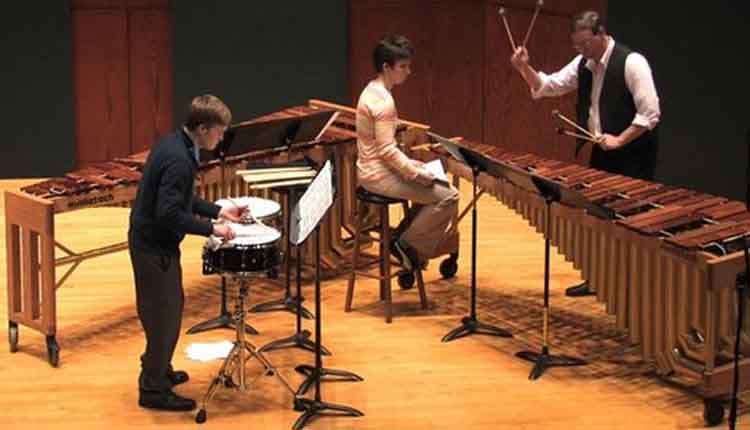The old adage, “where the rubber meets the road”, refers to the tires on an automobile as they spin on the road. In other words, that is where it all happens. That is what counts. That is when the automobile proves its worth.
To further explain…When a car has been in the repair shop and you bring it back home, clean it up, polish the chrome, scrub the hub caps, and have it looking like a “million bucks”, the final test is to take it on the road. Until the “rubber meets the road”, you will not know how well the car is performing.
This, in many ways, is true about what happens in a School of Music. The cleaning, polishing and scrubbing takes place during the weekly studio lessons; the “rubber meets the road” in the many ensemble classes that permeate everyone’s schedule.
To be more specific about the Percussion Department, let’s look at the elements of percussion performance and how it translates into performing in the bands, orchestras, ad hocs, combos, and percussion ensembles.
Technique
The first element of concern is technique. As many of you know, I have a sign in my studio that says: Precision, Sensitivity, Musicality. These three words were drilled into the percussion students by Saul Goodman at the Juilliard School of Music. Notice, the first word is precision – this refers to technique because without it we are very limited in our ability to perform in a sensitive and musical manner.
A technique can be broken down into many areas: single strokes, open and closed rolls, rudiments such as flams, drags, 4-stroke ruffs, etc. They all must be executed with precision if a percussionist is to be an effective performer.
Musical Expression
The ability to control dynamics and phrasing is essential when performing in an ensemble. Knowing when to play a solo f or an accompaniment f can make a huge difference when balancing your sound with the rest of the ensemble. Just the simple process of playing a phrase can become quite a task when 100 members of the orchestra must all execute a musical line in the same manner as the conductor sings it.
Following the Conductor
Much of what takes place in the studios (with the exception of playing with recordings) has a greater connection to solo performance than ensemble performance. The primary difference is that with ensemble performance you must listen to other performers in order to play accurately. This ability to “listen” is only developed in ensemble performance.
All musicians receive primary tempo indications from the conductor; however, as the music proceeds, for an ensemble to play with total rhythmic accuracy, each player must develop the skill of hearing both the solo and accompaniment lines as they move between players.
Almost more important than indicating the tempo of the music, the conductor is communicating dynamics, phrasing, excitement and passion to the musicians. As players, we must always have eye contact with the conductor. We never know when he or she may look our way to convey a direction regarding one or more of the expressions mentioned.
Percussion Ensemble Class
Now here else will percussion students be more scrutinized regarding their performing skills than in the percussion ensemble classes. Beside the musical elements mentioned above, which are common to all ensembles, in the percussion ensemble you will also be critically assessed in the following areas: instrument and stick selection, obtaining the proper sound from the instrument, multiple setup procedures, concentration, punctuality, response to criticism, facial and body expressions (playing with passion), eye contact, interaction with colleagues, and general professionalism.
As everyone prepares for the challenges that lie ahead with ensemble assignments – remember this is where “the rubber meets the road!”
Tony Cirone
Chair – Percussion Department
Jacobs School of Music at Indiana University – Bloomington


